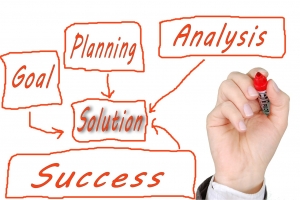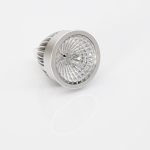
Life cycle cost analysis (LCCA) is the
holistic investigation of facility costs to assess the total cost of ownership. This includes building, maintenance and operations costs as well as the residual value of a building or a portion thereof. This process becomes useful during design as architects and engineers evaluate possible alternatives that differ in cost (both initial and long-term) but offer the same performance. For example, this calculation would be used when analyzing whether it makes sense to invest in a higher efficiency HVAC system with a greater initial cost but lower maintenance and operating costs.
To determine the answers to such questions,
design professionals utilizing LCCA look at multiple factors and make recommendations based on an individual owner’s prioritized goals. The owner may be seeking to decrease hard maintenance costs, increase asset value or produce an overall savings. Each of these scenarios would necessitate a different decision. In most cases, LCCA looks at the overall cost over the expected life of the building – i.e. “If X is implemented instead of Y, Z will be saved over so many years.” This is usually the value owners are considering when evaluating alternatives.

In addition, owners often also need to know an alternative’s rate of return – when their initial investment will pay off. For example, if an owner is considering installing higher efficiency toilets for an additional $100 per fixture, a designer performs LCCA to determine at what point the owner will begin to net a savings through decreased water bills. LED lighting is almost always a wise investment. It is important to note that
not all building components and solutions providing long-term cost savings require a significantly large upfront investment.
At R.E. Warner, we’ve found that items like LED lighting, high R-value insulation materials, and water efficient plumbing fixtures provide significant savings after a short period time. These are not a significant expense, especially when compared to green roofs, specialty heating/cooling systems and water retention/recirculating systems.
One of the tricky balancing acts with LCCA is
weighing whether a larger upfront cost makes sense given how an owner’s budget is structured. Often, projects are assigned separate construction and maintenance budgets – not life cycle budgets. With many different variables competing for resources in the construction stage, items with higher costs may not be feasible. And when these situations arise, designers are sometimes asked to present the lowest cost initial solution rather than seek the best long-term solution.
When our clients task us with this charge,
we still aim to propose solutions that not just fit the budget, but are also in the owner’s best interest. In our experience, the cheapest options often result in headaches. Therefore, we strive to find solutions that are overall a good value. To develop alternatives, we consider factors such as: whether the owner plans to maintain ownership of the building or intends to sell soon; whether the owner will be responsible for maintenance; whether the owner’s budget is fixed, with no wiggle room for additional upfront costs; and more.
Full LCCA is not for every project. A full analysis involves multiple parties, research and compilation of a report. A project with a small budget may not be able to afford a full analysis. However,
owners who wish to make efficient choices that minimize future maintenance and operations costs may still achieve that to an extent by hiring the right professional. An architect or engineer with experience in LEED design and/or LCCA will be able to tell an owner, within a range, when that extra $100 spent on a water efficient toilet will net a savings. We do this often for clients when a full LCCA is just not practical.
It is generally our standard approach to help clients balance upfront costs with long-term objectives.
Looking at life cycle costs can be beneficial to every project and every owner. The process assists the designer and the owner in determining the most efficient way to spend money by taking the present and future into account.
 This article is by Jen Kalin, LEED AP, Architectural Designer/Project Manager. Jen has over 10 years of experience in public, commercial, manufacturing, and residential buildings and facilities. Her experience includes programming, schematic design, design development, construction documents and construction administration. She has the capability to provide interior design/interior architecture services. Her portfolio includes new construction, renovation, and expansion projects.
This article is by Jen Kalin, LEED AP, Architectural Designer/Project Manager. Jen has over 10 years of experience in public, commercial, manufacturing, and residential buildings and facilities. Her experience includes programming, schematic design, design development, construction documents and construction administration. She has the capability to provide interior design/interior architecture services. Her portfolio includes new construction, renovation, and expansion projects.